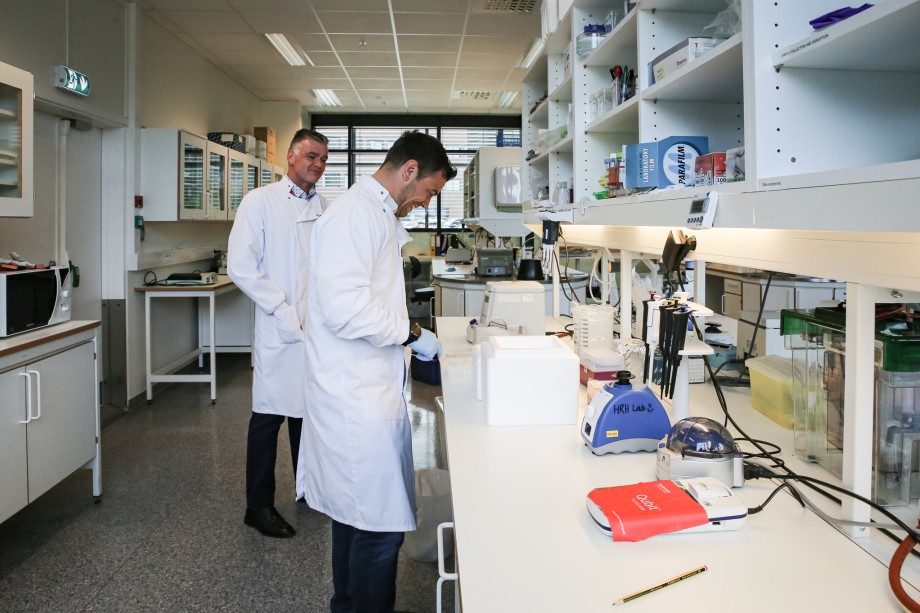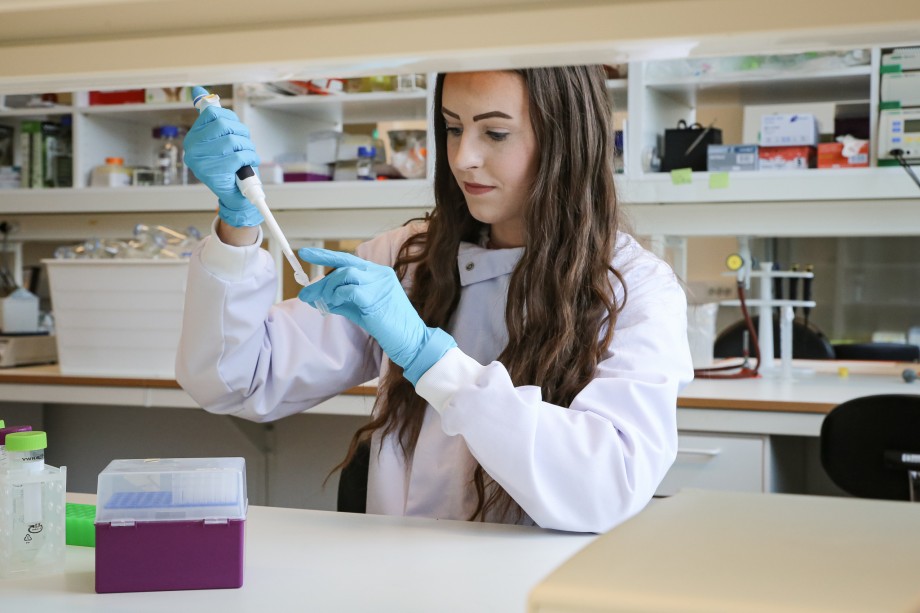Could the bacteria in our guts help us improve cancer treatment? This is one of the key questions in a new research collaboration between University of Stavanger and Stavanger University Hospital.

Summer vacation is close, but in the lab in Måltidets hus the tests are running day and night. Researchers in the Department of Chemistry, Bioscience and Environmental Engineering are doing several collaboration projects with Stavanger University Hospital (SUS). The researchers look closer at the bacteria in the human gut and how they are connected to human health. They are hoping that the collaboration with SUS will increase in the near future, with a new hospital rising just outside their lab.
«Soon the samples from the patients are just a short walk away» postdoc Martin Watson says. One of the funded projects he is working on at the moment is with the Oncology department. Professor Mark van der Giezen explains:
«1 of 10 patients that get treated for skin or lung cancer get serious problems with their intestines due to the cancer treatment. In Norway, 50 people get another disease as a result of this treatment every year. We are trying to predict what patients develop side effects from the treatment», van der Giezen says. The researchers look at the microbes in the gut, and how they interact with their host – the patient.
«Different combinations of the microbes can give us answers. If there is a big difference between the patients, obviously we can guide the oncologists and maybe give them a new tool for treating their patients», he says.
Studies of Crohns' patients
By analysing stool samples, the UiS team gets closer to understanding how microbes affect both human and animal health. Another microbiome project is related to Crohn's disease, a type of inflammatory bowel disease that may affect any segment of the gastrointestinal tract. Stavanger University Hospital have already done clinical studies of Crohns' patients. Now it's up to the researchers at UiS to find the missing links.
«What is present in the gut of these patients? Which microbes could be found? Is there a correlation between the different factors?» Mark van der Giezen asks.
Stool samples are analysed. The results from this work will show if there are certain patterns, for instance of the severity of the disease and the prognoses.
Medical school at UiS?
Medical research and education is an area of focus at the University of Stavanger. Establishment of academic programmes within medicine and health sciences for maintaining and developing a broad approach to health and healthcare services is a part of this initiative.
Mark van der Giezen likes the idea of a medical school at UiS, which hopefully will lead to increased research collaboration.
«The team at UiS and SUS all have different expertise. Some might ask if Stavanger is ready for medical school, or even worthy of this. My answer is yes. We have strong medical research at UiS already, and our aim is to get our knowledge out there. We want to make the general public know what we are working on», van der Giezen says.
The research group is now waiting for another project, which includes stool samples from 7000 patients. The samples will be checked for microbes that might be involved in diseases.
Text and photos: Kjersti Riiber
